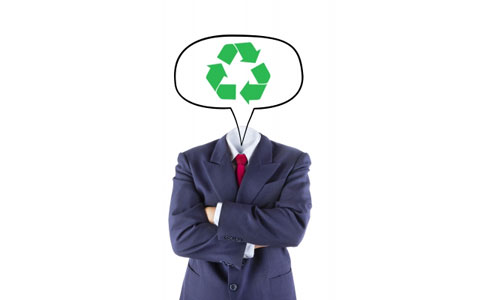There are options for eco-conscious companies that want to reduce the waste generated by 3-D printing.
June 12, 2015

There are options for eco-conscious companies that want to reduce the waste generated by 3-D printing.
Jamie Hartford
Low-cost 3-D printers have opened a lot of doors for medical device designers, enabling them to rapidly and inexpensively bring their designs to life. But the technology has also created an interesting problem for firms that choose to purchase their own 3-D printers: What do they do with the waste?
During a panel discussion on 3-D printing at MD&M East in New York City this week, one attendee posed this question to the speakers. He said his company has held off on getting a 3-D printer because they don’t want to be “stepping over models all over the office.”
While proponents tout additive manufacturing as a more efficient alternative to traditional manufacturing methods such as injection molding, the process still results in byproduct. Ink-jet 3-D printers waste between 40% and 45% of their ink, and there will inevitably be mess-ups and failed prototypes that need to be chucked. Compounding the problem is the fact that some materials used for 3-D printing pose an environmental hazard.
So what are eco-conscious companies that want to reap the benefits of 3-D printing to do?
Thankfully, a number of solutions exist.
Stratasys offers a free recycling program for used 3-D printing cartridges, canisters, spools, print engines, and containers.
Eariler this year, ExtrusionBot, a supplier of materials used in 3-D printing, completed a successful Kickstarter campaign to fund production of the Cruncher, a machine that breaks down 3-D prints into uniform-sized pellets that can be used with the company’s filament extruder. ReDeTec's Protocycler is an all-in-one version that grinds up waste and extrudes filament in a single machine.
The Ekocycle Cube 3-D printer, developed as part of the Ekocycle sustainability initiative backed by Coca-Cola and musician will.i.am, is fueled by postconsumer PET cartridges that contain the equivalent of three plastic bottles.
Purdue University researchers have developed the PackMerger algorithm, which can reduce the material used to 3-D print an object by 15–65% by printing the item in segments that can be glued together. As a bonus, it also reduces printing time.
Learn more about 3-D printing at the MEDevice San Diego conference and exposition, September 1–3, 2015.
Jamie Hartford is editor-in-chief of MD+DI. Reach her at [email protected].
[image courtesy of PAKORN/FREEDIGITALPHOTOS.NET]
You May Also Like


